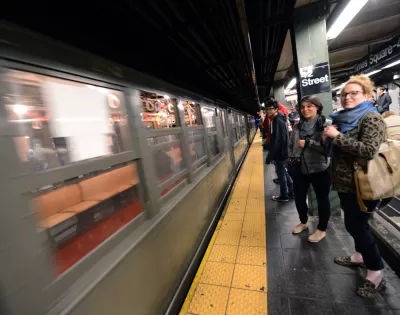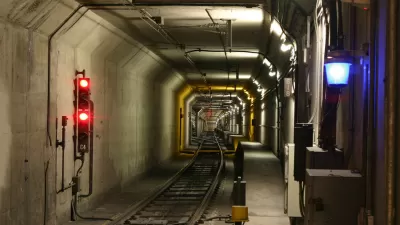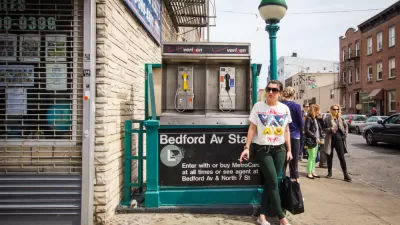An investigative report digs into the causes of delays on the New York subway and finds that the official company line might not square with reality.

Aaron Gordon releases a bombshell investigative report on delays on the New York subway, and the great lengths it seems the New York MTA has gone to cover up or avoid the real causes of the issue.
Gordon begins by explaining the MTA's long abused scapegoat for system delays: "a catchall category blandly titled 'insufficient capacity, excess dwell, unknown,' which captures every delay without an obvious cause. According to Gordon that category "is where the other primary MTA narrative developed, that of 'overcrowding': Historically high ridership has resulted in crowds that are keeping trains in stations longer."
But Gordon has found ample evidence to doubt overcrowding as the persistent reason for subway delays in New York, including, but not limited to, the fact that "overcrowding" delays have continued to increase even as ridership has decreased.
As for what is causing the delays, Gordon says the MTA had the real culprit under its nose in a report produced in 2014 but never released to the public. According to the article, the MTA slowed all the trains down after a train collision in 1995. According to Gordon, "the MTA, quite literally, slowed all the trains down, issuing a bulletin informing employees in April 1996 that their propulsion systems would be modified so they could achieve a maximum speed of 40 miles per hour, down from the previous high of 50 to 55 miles per hour on a flat grade."
There were other speed limits built into the system, including modified signals that would trip the speed of trains if they were traveling over a certain speed, requiring a restart process of duration anywhere from one to ten minutes long. An unpublished 2014 study, reported for the first time here by Gordon, "found 2,851 lost total passenger hours per weekday could be attributed to thirteen modified signals alone."
The article should be considered a long read, so there's a lot more detail, evidence, and commentary provided.
FULL STORY: ‘The Trains Are Slower Because They Slowed the Trains Down’

Study: Maui’s Plan to Convert Vacation Rentals to Long-Term Housing Could Cause Nearly $1 Billion Economic Loss
The plan would reduce visitor accommodation by 25,% resulting in 1,900 jobs lost.

North Texas Transit Leaders Tout Benefits of TOD for Growing Region
At a summit focused on transit-oriented development, policymakers discussed how North Texas’ expanded light rail system can serve as a tool for economic growth.

Using Old Oil and Gas Wells for Green Energy Storage
Penn State researchers have found that repurposing abandoned oil and gas wells for geothermal-assisted compressed-air energy storage can boost efficiency, reduce environmental risks, and support clean energy and job transitions.

Private Donations Propel Early Restoration of Palisades Playground
Los Angeles has secured over $1.3 million in private funding to restore the Pacific Palisades playground months ahead of schedule, creating a modern, accessible space that supports community healing after recent wildfires.

From Blight to Benefit: Early Results From California’s Equitable Cleanup Program
The Equitable Community Revitalization Grant (ECRG) program is reshaping brownfield redevelopment by prioritizing projects in low-income and environmental justice communities, emphasizing equity, transparency, and community benefits.

Planting Relief: Tackling Las Vegas Heat One Tree at a Time
Nevada Plants, a Las Vegas-based nonprofit, is combating the city’s extreme urban heat by giving away trees to residents in underserved neighborhoods, promoting shade, sustainability, and community health.
Urban Design for Planners 1: Software Tools
This six-course series explores essential urban design concepts using open source software and equips planners with the tools they need to participate fully in the urban design process.
Planning for Universal Design
Learn the tools for implementing Universal Design in planning regulations.
Ascent Environmental
Borough of Carlisle
Institute for Housing and Urban Development Studies (IHS)
City of Grandview
Harvard GSD Executive Education
Toledo-Lucas County Plan Commissions
Salt Lake City
NYU Wagner Graduate School of Public Service





























